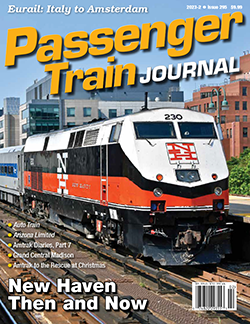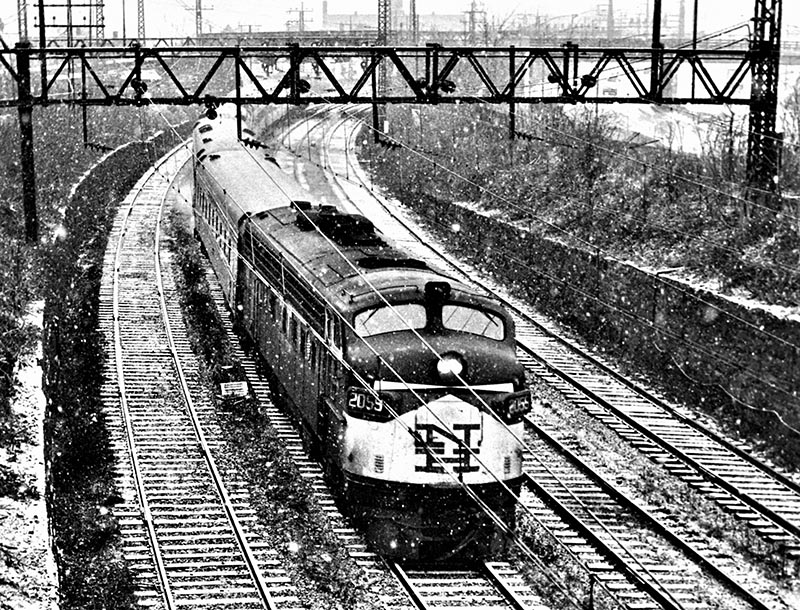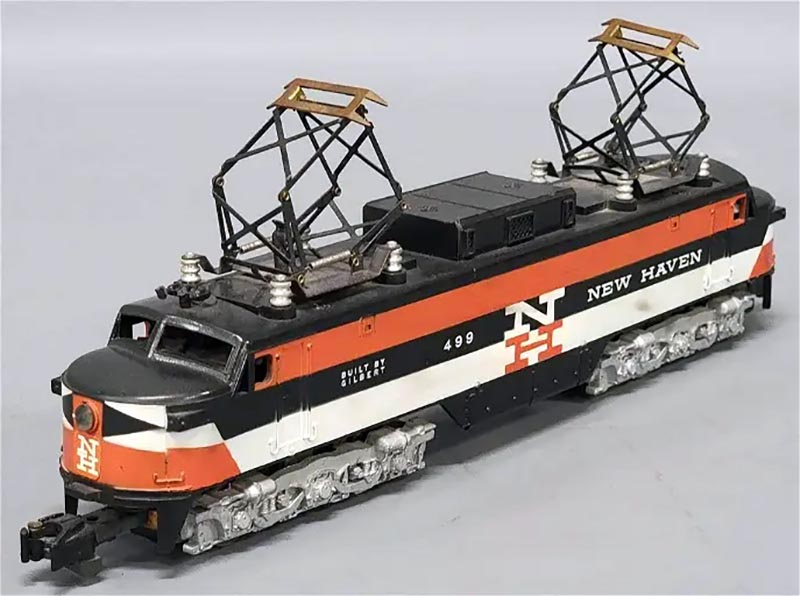 By Kevin McKinney/photos as noted
By Kevin McKinney/photos as noted
It was Christmas 1958. I was 10 years old, and increasingly interested in having an electric train, preferably an American Flyer. My parents reward-ed my interest with a randomly selected A.C. Gilbert American Flyer train set and, fortunately, the locomotive was a colorful New Haven EP5. Curiously, it came with freight cars, not passenger cars, but at that wonderful moment I didn’t care. I was keenly interested in knowing more about this railroad that existed 900 miles east of our Chicago apartment.
There would not be an internet for decades, so discoveries of any kind were extremely difficult. My dad, a financial analyst, brought home some research data that provided an overview of the railroad. Good fortune also came my way in the form of Rosamond “Rosy” Jenkins, an Illinois Central official who lived just down the street. He would catch the same IC train that my father took to get to work downtown, and from time to time they would share a walk. Hearing of my interest in trains, Rosy one day produced a slightly used Official Guide of the Railways as a gift, and suddenly I had well over a thousand pages of maps and schedules to absorb. The New York, New Haven & Hartford Railroad occupied a prominent position toward the front of the Guide.

—Bill Anderson photo
I discovered that New Haven was a railroad operating a lot of passenger trains. It moved commuters into New York and Boston, and operated high-frequency intercity trains, some of them extending beyond New Haven’s trackage to northern New England, Montreal, and south to Washington, D.C. New Haven intercity trains featured dining cars, grill cars, parlor cars (what was a “parlor car,” I wondered), and sleeping cars on overnight trains such as The Owl, Federal, Montrealer/Washingtonian, and State of Maine. There was electrified trackage according to the detailed map, the territory of full-size versions of the S-gauge locomotive I had received at Christmas.
This fascinating operation had to be seen in person, and things came together in summer 1960 as my mom and I traveled to New York on the 20th Century Limited to visit my aunt, uncle, and cousins who lived in Bronxville, N.Y. Bronxville is a station on New York Central’s Harlem Division, but our relatives lived closer to the Pelham station on New Haven’s four-track main line. My first ride on a New Haven train was aboard elderly open-window multiple-unit commuter cars to Pelham. The noise in the tunnel out of Grand Central was overwhelming, and I loved it.

A couple of days later, Mom and I headed from New York to New Haven on The Mayflower, a Boston-bound train. Not only did I want to see the epicenter of the New York, New Haven & Hartford Railroad, I wanted to visit the headquarters building nearby at 54 Meadow Street. We walked in the nine-story building and Mom explained to the receptionist that I was enamored with the New Haven and we had come from Chicago just to ride it. The receptionist called upstairs, and a few minutes later the railroad’s public relations executive, Robert McKernan, appeared. He invited us up to his office and after some chit-chat asked if I would like to see Cedar Hill Yard, New Haven’s main classification yard north of town. Moments later, we were in his car heading to the yard for a tour. After that initial experience, he and I became penpals.
Two years later, on another visit (once again via the 20th Century Limited), Mr. McKernan offered me a cab ride from New Haven to Bridgeport, Conn., on a Springfield line train powered by an FL9, a relatively new type of diesel unit that had the ability to pick up third-rail electric power on the approach to Grand Central Terminal or Pennsylvania Station, eliminating the change of locomotives at New Haven station (and reducing the role of the EP5).

The New Haven had entered bankruptcy and a challenging period the previous year. It was too important to be abandoned, but the states it served (and states elsewhere around the country) had yet to find ways to provide capital and operating assistance for commuter railroads. A “solution” of sorts was found with the merger of the New York Central and Pennsylvania railroads in February 1968. The Interstate Commerce Commission deemed that, as a condition of the merger, newly formed Penn Central had to absorb New Haven — and absorbed it was, at the stroke of midnight, as 1968 turned into 1969.
In 1968, I founded Passenger Train Journal and I believe it was either in the second or third issue of Volume One that we featured the Northeast Corridor with a map on the magazine’s cover along with the NH and PC logos. I wasn’t about to turn my back on “my” railroad in its final days. In early 1969, on a quick break from college, I flew from Michigan to New York to ride a short-consist Owl (that was still 100 percent New Haven equipment) overnight to Boston in order to ride the new TurboTrain back to New York City. The TurboTrain had domes, a first for the Shore Line Route, and provided an engineer’s-eye view of the railroad…



